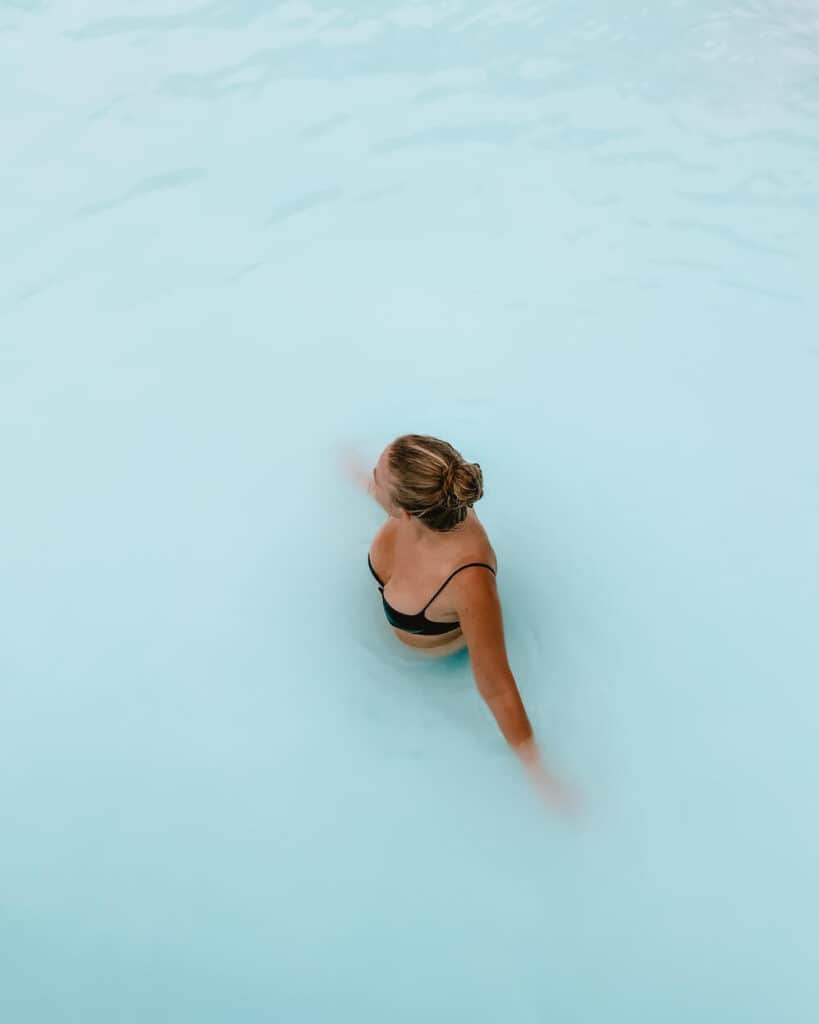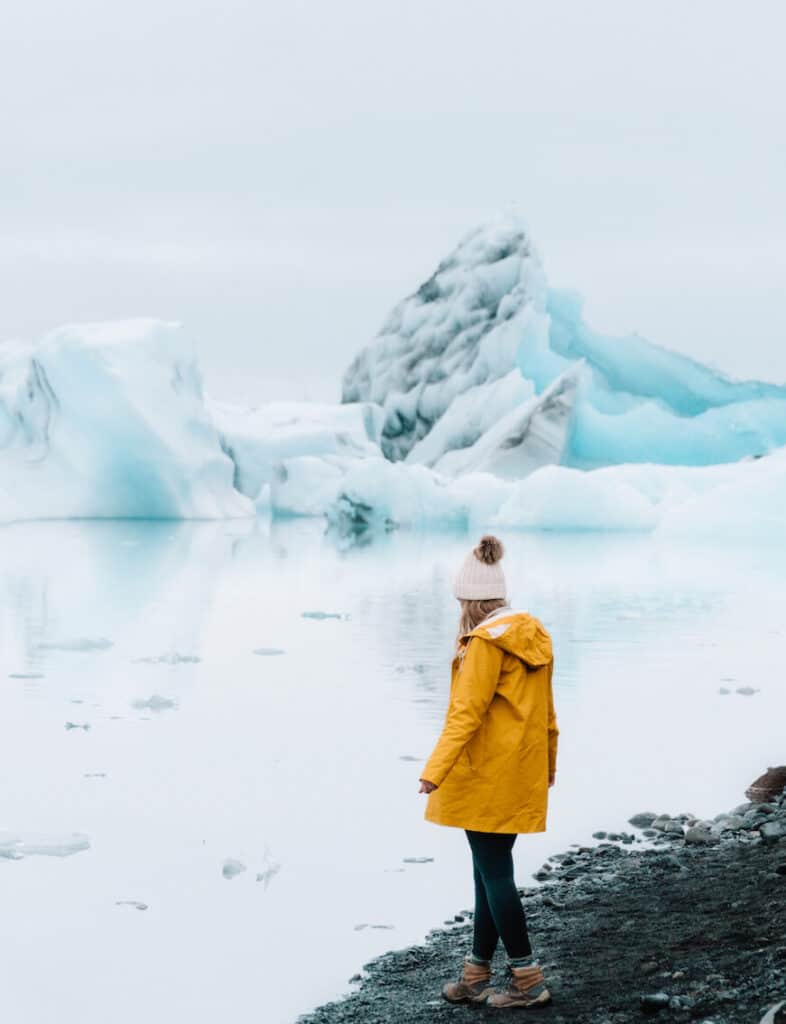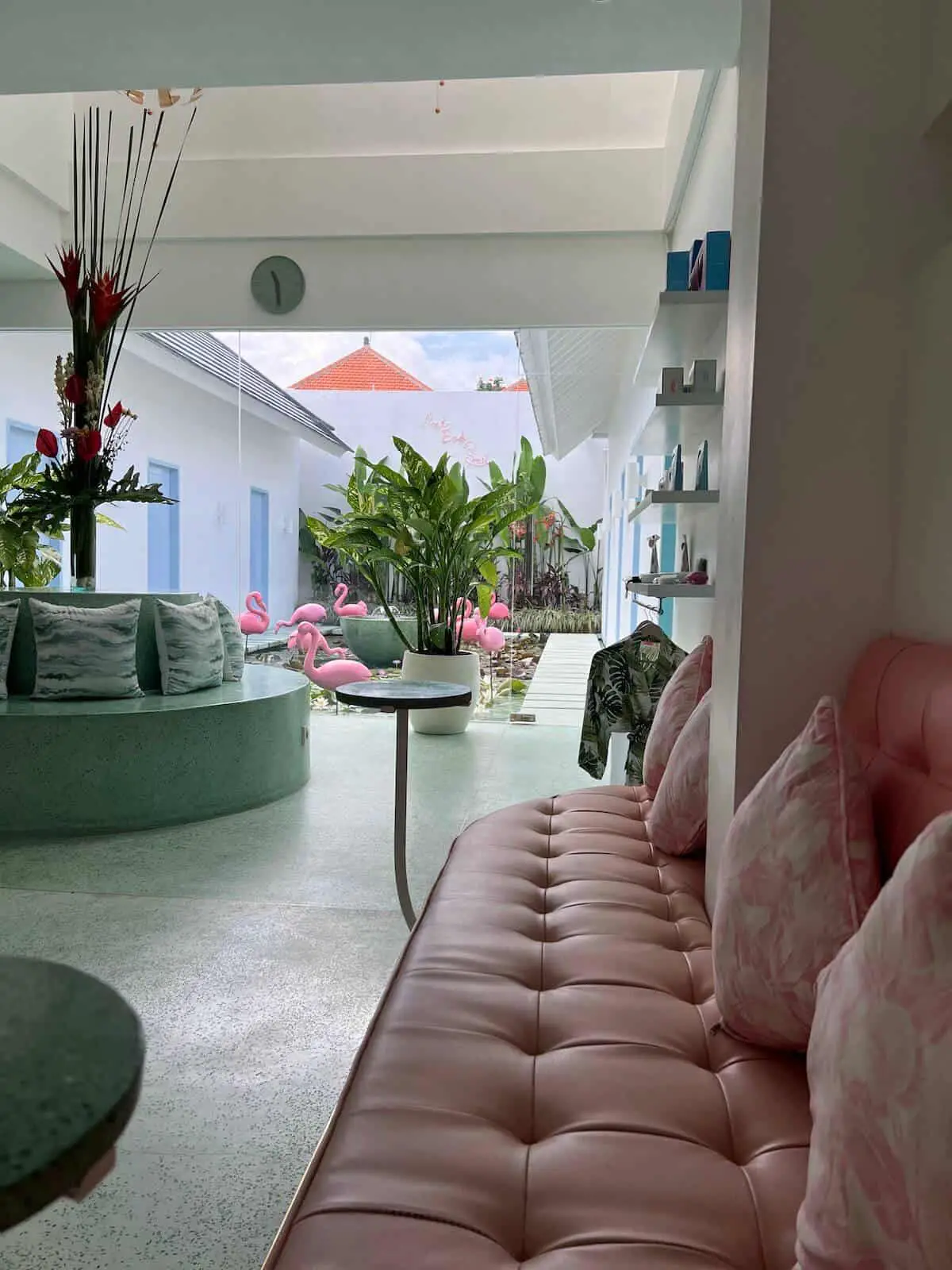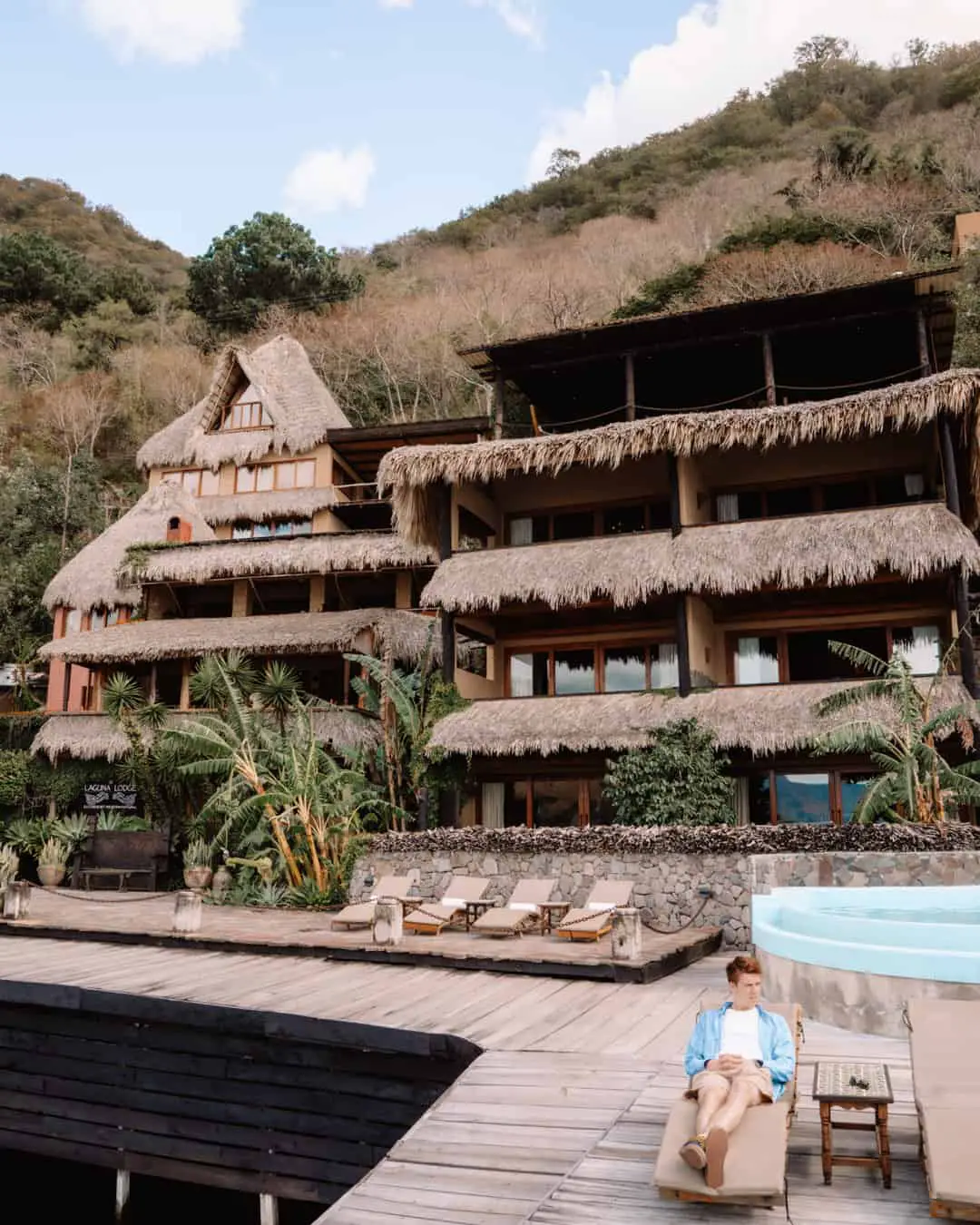Iceland Weather In Summer (Everything To Know)
Are you planning a trip to Iceland this summer? The weather in Iceland might be different from what you expect. So, to help you prepare for your trip, let’s go over everything to know about Iceland weather in summer.
This post may contain affiliate links, which means I’ll receive a commission if you purchase through my link, at no extra cost to you.

Iceland Weather In Summer
Despite its name, Iceland is a country with a fairly mild climate in the summer.
The gulf stream that flows along the south and west coast of Iceland brings some of the warmth from the Caribbean, and the earth’s hotspot beneath Iceland causes the temperatures to be quite pleasant.
Daytime temperatures in June, July, and August are moderate and pleasant, meaning you can walk around in a light, long-sleeved shirt or even a t-shirt on warmer days.
Temperatures drop at nighttime, so layering is critical when traveling to Iceland in the summertime.
[RELATED: 7 Days In Iceland Itinerary: How To Spend One Epic Week In Iceland]
How Warm Does Iceland Get In Summer?

Iceland experiences warmer weather in the summer than you might expect.
The average temperature in the south of Iceland is about 54°F (12°C). However, warmer temperatures of 77°F (25°C) have also been recorded in Reykjavik, in the south of Iceland.
Despite the warmer weather, you should pack for all weather possibilities when visiting Iceland.
A popular saying is that if you don’t like the weather, wait five minutes. The temperatures and weather in south Iceland constantly change as the warm winds from the gulf stream mix with the cold arctic air.
The temperatures in northern Iceland don’t climb as much in the summer, with an average daytime temperature of 52°F (11°C).
There aren’t as many temperature fluctuations in northern Iceland, and the temperatures are consistently cooler than in the south.
What Is The Hottest Month In Iceland?
The hottest month in Iceland typically tends to be July. This is also the most popular time for tourists to visit Iceland since the days are longer and the weather is more moderate.
In July, you can expect temperatures between 50°F and 59°F (10 – 15°C) in Iceland.
Most people find these temperatures comfortable and therefore visit Iceland in July.
June and August also have similar temperatures, but if you want to catch the hottest day in Iceland, your best bet will be to go in July.
While daytime temperatures are comfortable in Iceland in July, the temperature drops significantly at night.
[RELATED: 13 Best FREE Things To Do In Iceland: Visit Iceland On A Budget]
Daylight Hours In Iceland In Summer

You may already know that Iceland has almost 24 hours of sunlight a day during some summer months.
The summer solstice in Iceland occurs at the end of June, when you can experience between 20 and 22 hours of daylight. The sun never fully sets during this time, but rather hovers just below the horizon.
If you’re visiting Iceland in July, you can expect around 18 to 21 hours of daylight. The sun typically dips just below the horizon around midnight, and then pops back up again a few hours later.
Having nearly full sun is quite an experience when traveling to Iceland. Many people prefer this to having almost no daytime during Iceland’s winters.
On average, you can expect to experience 18 hours or more of daytime when traveling to Iceland during the summer.
Pros Of Visiting Iceland In Summer
There are many reasons why one should consider visiting Iceland in the warm months.
The first reason is Iceland weather in summer – the temperatures are much more mild than other times of the year. This time also brings about the majestic green fjords and scenery.
Beautiful flowers pop up everywhere, and the sky is crisp and clear.
There is plenty to do in Iceland during the summertime, and you’ll experience a completely different scenery when traveling to Iceland than in the winter.
You can still visit the glaciers since the north doesn’t get hot enough for them to melt.
You’ll also get to see the puffins in Iceland if you visit in summer. They only visit Iceland from June to August, and it’s a breathtaking sight to see hundreds of puffins along Iceland’s shoreline.
And finally, the best part about visiting Iceland in summer is that you have more daylight hours to explore!
We visited in July and it was so magical having almost 24 hours of daylight available to us. The midnight sun allowed us to explore all night when the main sights were less busy.
[RELATED: Should You Stay in One Place in Iceland? (Everything To Consider)]
Cons Of Visiting Iceland In Summer
Visiting Iceland in the summer also has a few downsides. You’ll pay more for flights and hotels because this is the peak tourist season in Iceland.
Some trips and tours may be fully booked, meaning you might not visit everything you want to while there.
Another con for some people is that it can be hard to sleep at night when the sun is still bright. If you’re worried about the midnight sun keeping you up, make sure you book accommodation with blackout curtains.
You also won’t experience the northern lights in Iceland during this time because they are only visible when it’s fully dark out.
Finally, you won’t know how beautiful the towns and cities of Iceland are when covered in a layer of snow.
So, decide what aspects of Iceland you want to experience most before committing to a time to go.
Does It Snow In Iceland In Summer?

It typically doesn’t snow in Iceland in the summer. You may see some snow on the mountaintops in the north but it’s unlikely that you’ll experience any snowfall when visiting Iceland in the warm months.
You will see plenty of grass-covered fields and blooms, though.
While you may feel that this is a negative point, since the snow-covered scenery of Iceland is beautiful, the absence of snow also means there won’t be snow or ice on the roads, making road trips safer and more comfortable.
What To Pack For Iceland In Summer

Not sure what to wear in Iceland in summer?
As I mentioned before, temperatures and weather conditions can vary wildly during the summer days. It’s a good idea to be prepared for just about any scenario.
That said, here’s an overview of what I recommend packing for Iceland in summer:
- Waterproof hiking boots
- Swimsuit & flip flops (for hot springs)
- Plenty of layer-able tops with short and long sleeves
- Pants for hiking (leggings will usually be ok for ladies)
- Raincoat
- Gloves, hat, and scarf
- Sleep mask (for blocking out the midnight sun)
- Reusable water bottle
- Sunscreen
- Nicer clothes for going out in Reykjavik
Iceland Weather By Month
If you’re considering a time to go to Iceland, you might be interested to know how the weather is at other times of the year.
What weather can you expect in Iceland for each month of the year? Let’s consider Iceland’s weather by month.
January
January is the middle of winter in Iceland, so prepare for cold nights and plenty of northern light sightings.
Average temperatures: Between27°F and 35°F (-3°C – 2°C)
Daylight hours: Approximately 5 hours per day
February
February is known to have the most unpredictable weather in Iceland, so be prepared for anything. You’ll still have beautiful views of the northern lights.
Average temperatures: Between26°F and 37°F (-3°C – 3°C)
Daylight hours: Between 7 and 10 hours of daylight per day
March
You can expect slightly warmer temperatures in March. March signals the start of spring and brings more daylight hours to Iceland.
Average temperatures: Between 22°F and 38°F (-2°C – 3°C)
Daylight hours: Around 10 to 13 hours
April
In April, the weather really starts to warm up in Iceland. There are summer festivals in Iceland during April to celebrate the warmer weather.
Average temperatures: Between 34°F and 45°F (2°C – 7°C)
Daylight hours: As many as 16 hours per day
May
You will notice the fields turning green and leaves growing on the trees in Iceland during May. The time for seeing the northern lights is over in May.
Average temperatures: Between 40°F and 50°F (4°C to 10°C)
Daylight hours: About 20 hours
June
If you visit Iceland in June, you’ll witness the infamous midnight sun appearing. Nature is green, and you may see the first puffins in Iceland in June.
Average temperatures: Between48°F and 59°F (9°C – 15°C)
Daylight hours: Approximately 20 – 21 hours
July
July is typically known as the hottest month in Iceland. It is also the month most tourists visit Iceland, as they can experience the beautiful scenery and many hours of daylight.
Average temperatures: Between50°F and 59°F (10°C – 15°C)
Daylight hours: About 18 hours
August
By August, the fall weather is creeping in Iceland. The country gets darker, and the temperatures drop suddenly.
Average temperatures: Between46°F and 55°F (8°C – 13°C)
Daylight hours: Approximately 14 hours
September
Expect some rainy days in Iceland in September. The days are shorter and quite windy. There are some warm days, but the temperatures start to cool down in September.
Average temperatures: Between 41°F and 50°F (5°C – 10°C)
Daylight hours: Between 11 and 14 hours
October
Octobers in Iceland bring about colder temperatures and heavy rain. You will start to see the northern lights again in October.
Average temperatures: Between36°F and 44°F (2°C – 7°C)
Daylight hours: Around 8 to 11 hours
November
November is another unpredictable month in Iceland. Some days will feel like spring, while others feel like full-on winter. So, bring warm clothes and enjoy the northern lights.
Average temperatures: Between 30°F and 38°F (-1°C – 3°C)
Daylight hours: Approximately 8 hours
December
December is known as the darkest month in Iceland. You’ll see a lot of snowfall and beautiful views of the northern lights and ice caves.
Average temperatures: Between 27°F and 36°F(-3°C – 2°C)
Daylight hours: Around 4 to 5 hours
Final Thoughts
No matter what time of year you visit, Iceland is one of the most beautiful places to go!
If you visit Iceland in the summer, expect moderate temperatures, lush greenery, and up to 24 hours of daylight for adventuring.
This post was all about Iceland weather in summer.
You may also like:
- 13 Best FREE Things To Do In Iceland: Visit Iceland On A Budget
- 13 Incredible Things To Do In Vik, Iceland
- 7 Days In Iceland Itinerary: How To Spend One Epic Week In Iceland
- Should You Stay in One Place in Iceland? (Everything To Consider)
- The Ultimate Guide To Visiting Skogafoss Waterfall In Iceland





